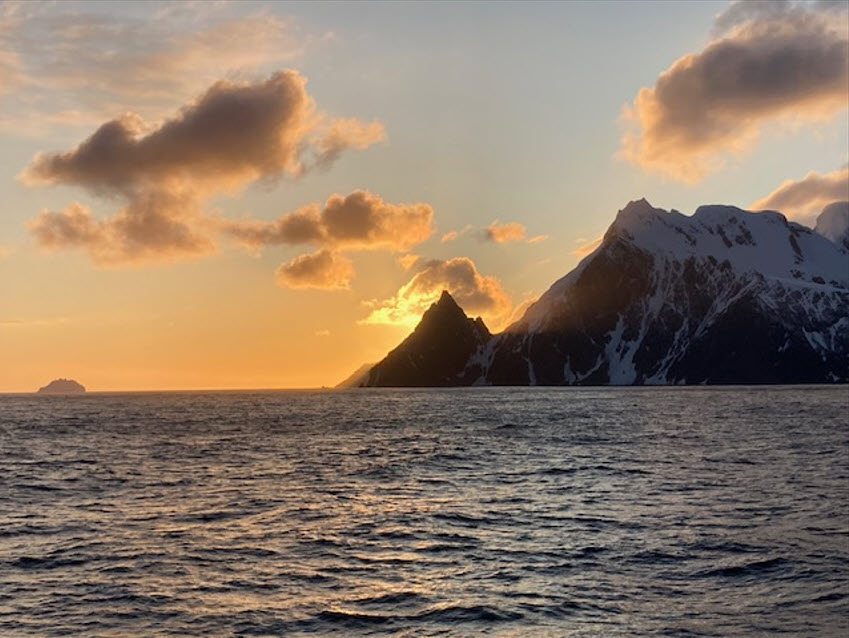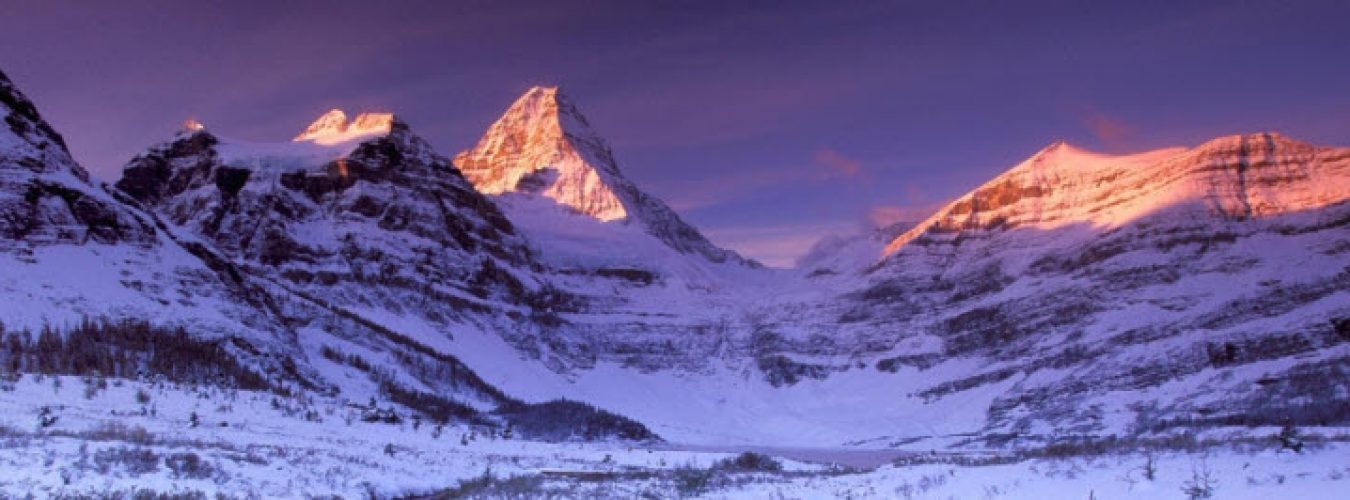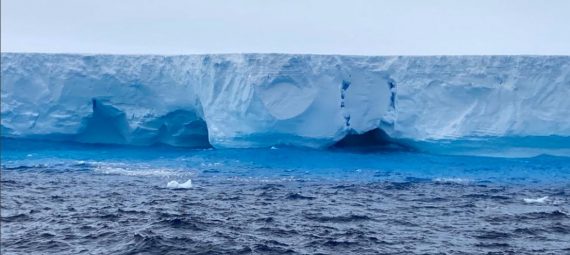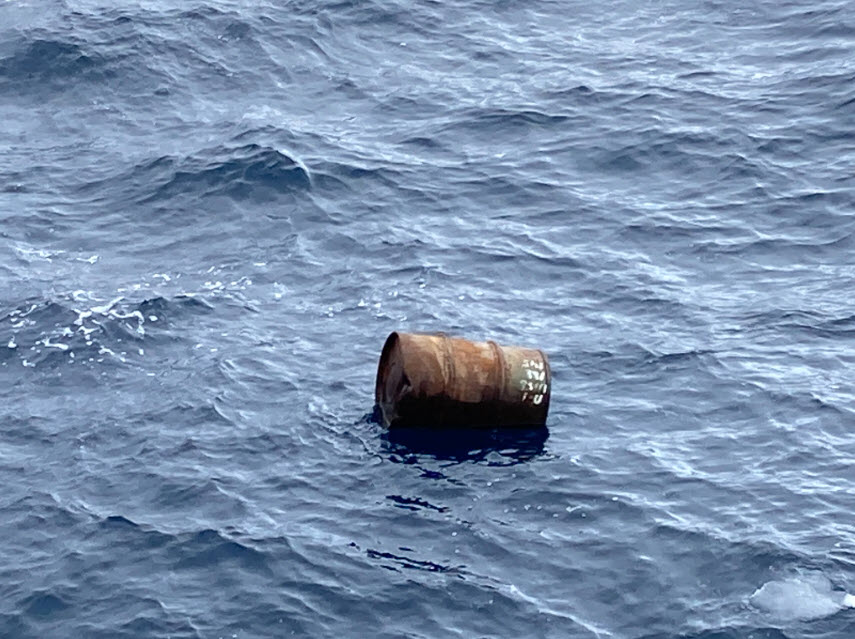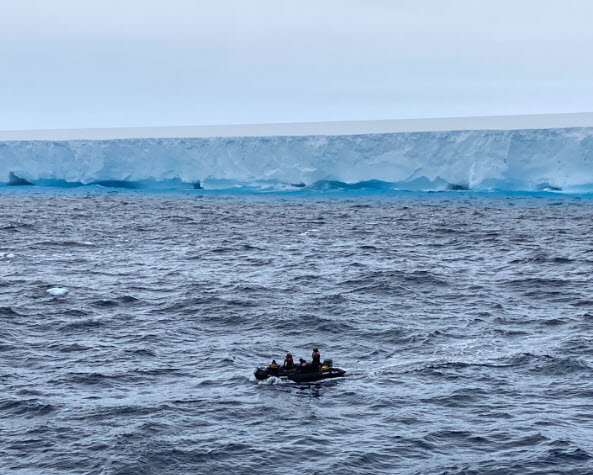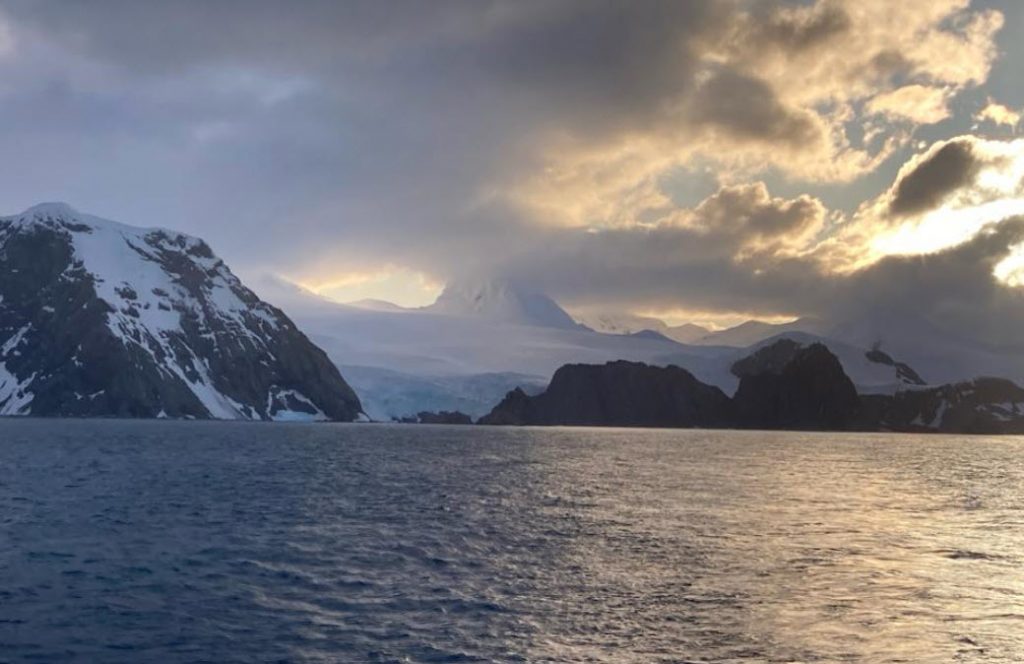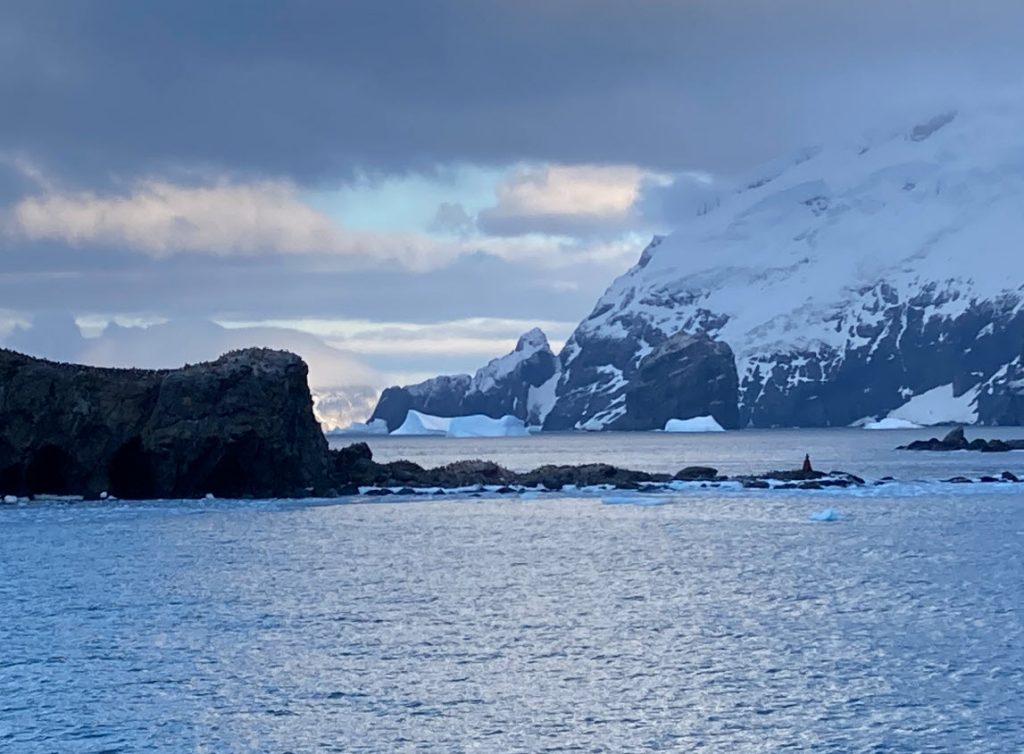10th – 11th January 2024
We had two days at sea to look forward to. An opportunity to catch up with some chores, our blog and even read one of those books we’d brought. But our passage was eventful.
Both mornings started for Lynne with an ad-hoc yoga class, as Maria, one of the Expedition Team, was a yoga instructor. It was only two weeks since Lynne’s last session, but boy was it necessary! The ship was rolling and pitching so we kept to floor exercises.
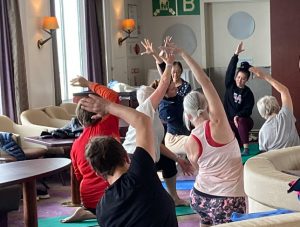
We enjoyed lectures over the two days, about the history of exploration in the Antarctic, commercial whaling, penguins, whales, and ice. Incredible to learn that over the sixty years of whaling in South Georgia, 175,000 whales were slaughtered, among them, killing 95% of the blue whale population.
The blubber was boiled down to produce oil, which was used for lamps and other essential things where we used oil in the industrial world at that time. Of course, there are continuing threats to the regeneration of the whale populations, including getting caught accidentally in fishing nets and loss of food through climate change.
We enjoyed a “down” day on Wednesday, in Lynne’s case this consisted of lying flat on her cabin bed because she felt distinctly queasy.
We came across another pod of over thirty whales, mostly fin whales, but didn’t slow our pace to enjoy them.
A23a
Thursday, we woke to the incredible sight of the world’s largest iceberg, A23a. It’s a tabular iceberg, two hundred and eighty metres high, showing twenty five metres above the water and about twice the size of Greater London or three times the size of New York City. When it calved in 1986 it was 5,883 square kilometres but got stuck in the Weddell Sea, making the news last year as it left the Weddell Sea being pushed towards the warmer waters off South Georgia. We sailed alongside it, enjoying the ice caves and blue colouring.
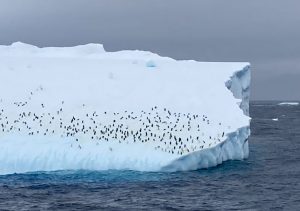
We stopped to watch chinstrap penguins on a small iceberg, that had broken off. We were all laughing as they slipped and dived into the sea for food and then launched themselves into the air, gripping the iceberg as they landed with their sharp claws.
Our visit was prolonged by a passenger inadvertently dropping a reusable coffee cup overboard, which the team managed to retrieve, by skilful manoeuvring by the captain and one of the Expedition team fishing it out with a swimming pool net! Unsurprisingly no one claimed it!
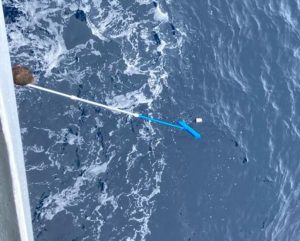
Then the ship turned again as a rusty barrel was spotted floating in the water. A Zodiac was lowered into the choppy seas, and despite the swell, some of the team managed to retrieve the empty barrel and prevent this larger piece of debris polluting the waters.

Abandoned barrel 
Rescue mission
Elephant Island
Lynne was feeling much better, so we managed a gym session over lunch, but still had to grasp the treadmill to avoid missing steps, with the pitching of the ship.
We arrived at the little harbour at Point Wild where the twenty two men from the Endurance spent four months surviving on rations, bolstered by penguin meat, sheltered only by their up-turned lifeboats. The beach has eroded but even at twice the size it was tiny and exposed to the weather from the Drake Passage.

Point Wild entry 
Shackleton’s men’s refuge
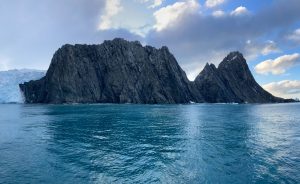
We were treated to some calving on the glacier beside it and beautiful sunlight on the snow and icebergs. We then sailed eastwards to Cape Valentine where the men had originally landed on Elephant Island, where the beach was unsuitable for staying. The views of the island were magnificent in the setting sun.
No time to read a book!
